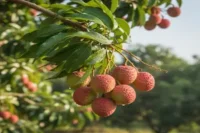How To Grow Summer Squash From Seeds: Types and Benefits
Published: 5 Apr 2024
What is Summer Squash
As I delve into the gardening world, I have found a fascination with one particular group of vegetables: summer squash. But what exactly is summer squash? Summer squash Belongs to the Cucurbitaceae family, these squashes are harvested when immature, ensuring their skin is tender and edible. Unlike their winter counterparts, which are harvested when fully matured, summer squashes are known for their quick growth and versatility in the kitchen.
Summer squashes come in various shapes and sizes, from the well-known zucchini to the less common pattypan squash. Their flavors are generally mild, making them an excellent addition to different dishes, from sautés to salads. Furthermore, their high water content refreshes them during the year’s warm months, when they naturally thrive.
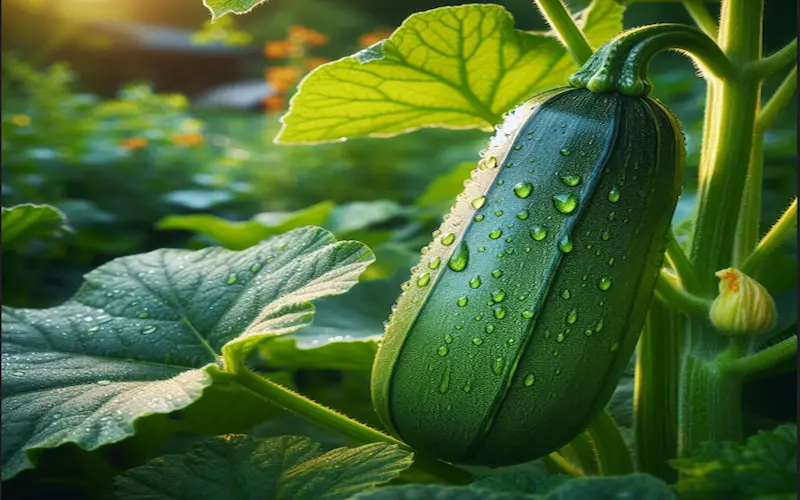
Understanding the essence of summer squash is the first step in mastering their cultivation. As I explore the nuances of these vibrant vegetables, I will share with you the culmination of my experiences and research on how to grow summer squash from seeds.
Introduction On How to Grow Summer Squash
Embarking on cultivating summer squash, I discovered it is rewarding for novice and experienced gardeners. Seeing seeds or seedlings transform into bushels of squashes is genuinely fulfilling. Summer squash plants are known for their vigorous growth and relatively low maintenance, given the right conditions to flourish.
As I set out to understand how to grow summer squash, I learned they require full sun, consistent watering, and fertile soil. They are also fast growers, with some varieties ready to harvest within 50 days after planting. This immediacy of gratification makes growing summer squash especially appealing for those who wish to see results quickly in their gardens.
When I first started growing summer squash, the initial success was incredibly encouraging. The plants took well to the environment I provided, and soon, I was harvesting more squash than I knew what to do with. This abundance led me to explore various ways to use and preserve the fruits of my labor, which I will share later in this guide.
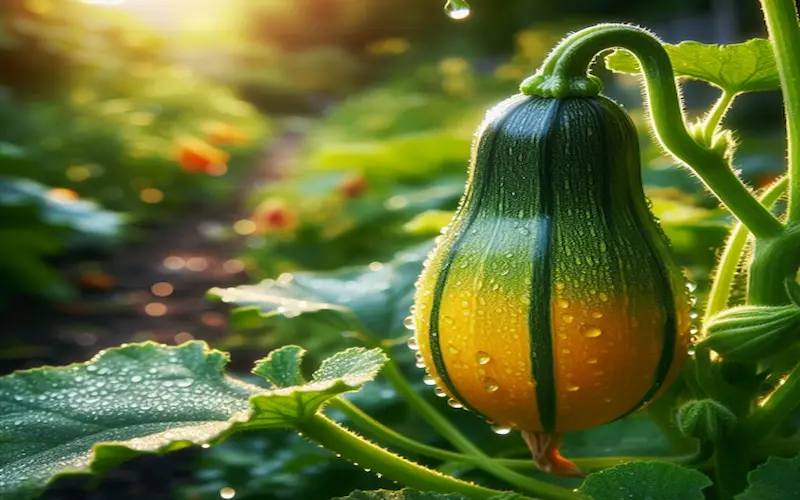
| Benefits of Growing Summer Squash |
|---|
Growing summer squash has brought numerous benefits beyond the simple pleasure of producing my food.
|
Understanding the Different Types of Summer Squash
In exploring how to grow summer squash from seeds I discovered the remarkable diversity within this category. The most common type is zucchini, with its cylindrical shape and green or yellow skin. However, other varieties, such as yellow crookneck and straight neck squashes, boast unique flavors and textures that delight culinary applications.
Pattypan squash’s distinctive flying saucer shape offers a firmer texture that holds up well when grilled or stuffed. Cousa squash, a Middle Eastern variety, is similar to zucchini but with a sweeter taste. Each type of summer squash brings something unique, and growing a variety can make for an exciting and colorful harvest.
Learning about the different types of summer squash helped me plan my garden to include an assortment that would be visually appealing and palate-pleasing. It also helped me understand each variety’s growth habits and needs, which is crucial for their successful cultivation.
Choosing the Right Location
When I set out to plant my summer squash garden, I knew the location would be critical to its success. Summer squash thrives in areas with full sun, meaning at least six to eight hours of direct sunlight daily. This is essential for developing vigorous, healthy plants and an abundant yield.
I also considered the space requirements for these plants. Summer squash can be quite sprawling, and some varieties are known to spread outwards if left unchecked. Therefore, I ensured ample room between plants to accommodate their growth, promoting good air circulation and reducing the risk of fungal diseases.
In addition, selecting a spot with easy access to water was essential since consistent moisture is vital for summer squash. The site needed to be close enough to a water source to make watering convenient yet with good drainage to prevent waterlogging. This careful consideration in site selection paid off with a manageable and productive garden.

Soil Preparation for Optimal Summer Squash Growth
The foundation of any successful garden is the soil quality, and summer squash is no different. These plants prefer well-drained soil that is rich in organic matter. Before planting, I worked with plenty of compost to enrich the soil, which provided essential nutrients and improved soil structure.
The soil pH is also a consideration; summer squash prefers a slightly acidic to neutral pH between 6.0 and 7.0. I tested my soil and made adjustments as needed, sometimes adding lime to increase the pH or sulfur to decrease it. Achieving the right balance is crucial for nutrient uptake and overall plant health.
Moreover, I took care to break up any large clumps of soil and remove debris that could impede root growth. This thorough preparation ensured the soil was in prime condition for planting, setting the stage for a successful summer squash crop.
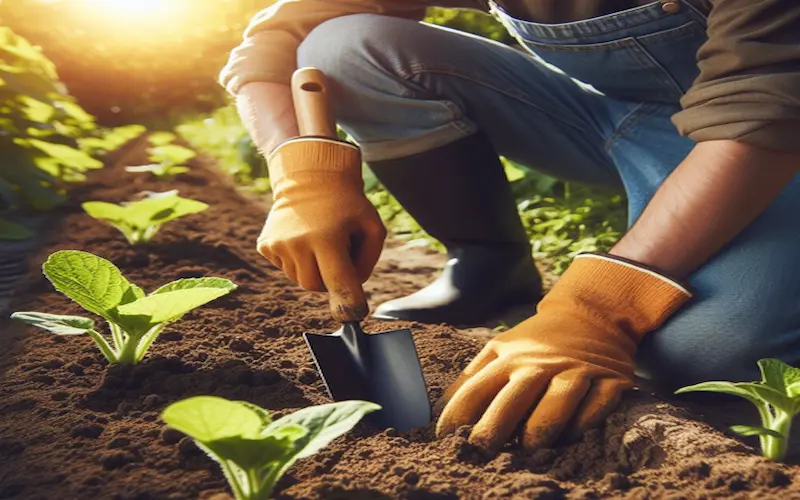
Planting Stage of Summer Squash Seeds
Two primary methods for growing summer squash start from seeds or transplanting seedlings. I have tried both and found that each has its advantages. Planting seeds directly into the garden is cost-effective and allows the plants to establish a robust root system where they will continue growing. Typically, I plant the seeds about an inch deep and space them according to the variety’s requirements.
Alternatively, transplanting seedlings can offer a head start on the growing season. This is particularly beneficial in regions with shorter summers. I often start seeds indoors under grow lights several weeks before the last expected frost, then transplant the seedlings once the danger of frost has passed and the soil has warmed.
Whether starting with seeds or seedlings, timing is crucial. Summer squash does not tolerate frost, so ensuring the temperature is consistently warm is vital for successful germination and growth. I also remember that overcrowding can lead to issues, so I give each plant enough space to grow to its full potential.
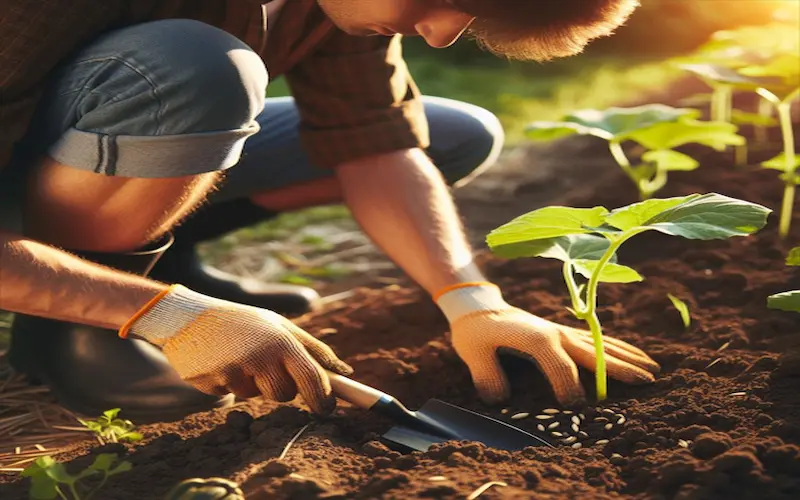
Watering and Fertilizing to Summer Squash Growing Plants
Consistent watering is critical to growing healthy summer squash plants. They require a steady moisture supply, especially during dry spells and as fruits begin to form. I aim to provide deep watering that reaches the roots while avoiding wetting the foliage to prevent disease. A good rule of thumb is to water enough so the soil is moist but not soggy.
When it comes to fertilizing, I’ve learned that moderation is essential. Too much fertilizer can lead to lush foliage at the expense of fruit production. I apply a balanced, all-purpose fertilizer according to the product’s instructions, usually when the first flowers appear. This boosts growth and assists in fruit development.
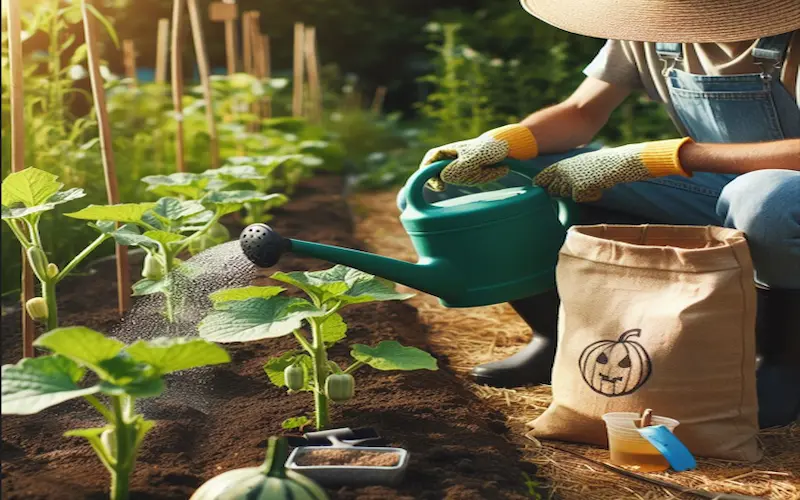
For an organic approach, I sometimes use compost tea or a side dressing of compost around the plants. This not only feeds the plants but also continues to enrich the soil. Monitoring the plants’ growth and adjusting water and fertilizer as needed helps me maintain a thriving summer squash garden.
How to Grow Summer Squash Vertical: Pruning and Trellising Techniques
In my quest to learn how to grow summer squash vertically, I discovered that pruning and trellising are invaluable techniques. By training summer squash to grow upwards, I can save space in my garden and promote better air circulation around the plants.
I start by installing sturdy trellises or cages when planting. As the plants grow, I gently guide them to climb the structures, securing them with soft ties if necessary. Pruning is also part of this process; I remove excess leaves to encourage upward growth and improve sun exposure to developing fruits.
This vertical approach has also made spotting and managing pests and diseases easier, as the fruits are more visible and off the ground. While not all varieties of summer squash are suited to vertical growth, those that are have thrived in this system, and it has become a regular part of my gardening practice.

Common Pests and Diseases of Growing Summer Squash and How to Manage Them
Throughout my gardening journey, I have encountered various pests and diseases that can affect summer squash. The most common culprits are squash bugs, vine borers, and powdery mildew.
I practice proactive garden hygiene by removing debris and diseased plant material to combat these challenges. Crop rotation is another strategy I use to prevent disease carryover from year to year. Hand-picking or using insecticidal soap has been effective for pests like squash bugs.
Should vine borers become an issue, I’ve found that wrapping the base of the squash stems with aluminum foil can deter them. As for powdery mildew, ensuring good air circulation around the plants and using a fungicide, if necessary, helps to manage this disease.
Vigilance and timely intervention are crucial for maintaining the health of summer squash plants. By monitoring my garden regularly and addressing issues promptly, I can keep my plants thriving and productive.
Harvesting and Storing Stage of Summer Squash
One of the joys of growing summer squash is the harvest. These vegetables should be picked when they are young and tender, which typically means they are between 6 and 8 inches long for zucchini and similar varieties. Frequent harvesting encourages the plants to produce more fruit.
To harvest, I use a sharp knife or pruning shears, carefully cutting the squash from the vine to avoid damage to the plant. I’ve learned that handling the squash gently is essential, as they can bruise easily.
Once harvested, summer squash can be stored in the refrigerator for up to a week. If I have an abundance of squash, I also preserve it by freezing, pickling, or dehydrating it. This allows me to enjoy the fruits of my labor well beyond the growing season.

Delicious Summer Squash Recipes
With an abundant harvest of summer squash, I have had the opportunity to experiment with various recipes. From savory dishes like zucchini fritters and stuffed squash to sweet treats like zucchini bread, the versatility of summer squash in the kitchen is astounding.
One of my favorite ways to enjoy summer squash is by grilling it with olive oil and herbs. It makes for a simple yet flavorful side dish. I love incorporating grated squash into pasta dishes for added nutrition and moisture.
Exploring different recipes has allowed me to appreciate summer squash in new ways and share my harvest with friends and family through delicious meals. I’m always on the lookout for new ideas and enjoy the creativity that comes with using summer squash in the kitchen.
Troubleshooting Common Issues in Growing Summer Squash
Growing summer squash can come with its share of challenges, like any gardening endeavor. There have been times when my plants didn’t seem to thrive as they should, and I’ve had to troubleshoot various issues.
One common problem is poor fruit set, possibly due to a lack of pollination or environmental stresses. To address this, I ensure plenty of flowering plants around to attract pollinators, and I sometimes hand-pollinate flowers myself.
Another issue can be wilting plants, often a sign of insufficient water or a pest problem. I can usually prevent these issues by maintaining a consistent watering schedule and inspecting my plants regularly for pests.
Overcoming obstacles in the garden has taught me resilience and adaptability. Each problem solved is a lesson learned, making me a better gardener with each passing season.
Conclusion and Final Tips for Success
Reflecting on my experiences mastering how to grow summer squash, I am reminded of the importance of patience, observation, and continuous learning. Gardening is a journey with successes and setbacks, but each step brings new understanding and fulfillment.
To those embarking on their own summer squash growing adventure, my final tips for success are to start with good soil, choose the right location, be diligent with care, and embrace the learning process. Experimentation and adaptation are crucial to finding what works best in your unique garden environment.
Growing summer squash has been a rewarding part of my gardening life, and I hope this comprehensive guide helps you find the same joy and abundance in your garden. Happy planting, and may your summer squash flourish!

- Be Respectful
- Stay Relevant
- Stay Positive
- True Feedback
- Encourage Discussion
- Avoid Spamming
- No Fake News
- Don't Copy-Paste
- No Personal Attacks



- Be Respectful
- Stay Relevant
- Stay Positive
- True Feedback
- Encourage Discussion
- Avoid Spamming
- No Fake News
- Don't Copy-Paste
- No Personal Attacks


